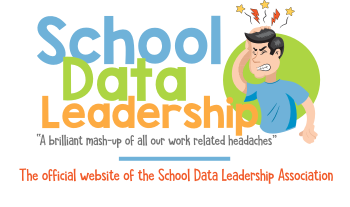Intellectual autonomy: a capacity for active, self-directed thinking. An ability to think and reason for oneself, especially when it might run counter to existing 'groupthink'.
For educators, fostering intellectual autonomy involves nurturing students' ability to engage in active, self-directed thinking. This capability is crucial for helping students develop their reasoning skills, particularly in environments dominated by prevailing groupthink or conventional wisdom. Here's how educators can promote intellectual autonomy in their teaching practices and classroom environments:
1. Encouraging Independent Inquiry
Educators can cultivate intellectual autonomy by encouraging students to pursue their own questions and conduct independent research. This could involve project-based learning where students choose topics of interest, formulate their own questions, and seek answers through exploration and research, thus practicing self-directed learning.
Real world examples:
- A high school English teacher allowing students to choose a novel to read independently and develop their own thesis statements and interpretations, rather than being given a set text and analysis.
- A science fair project where students identify their own research questions related to a broad topic, design and conduct experiments, and draw their own conclusions.
2. Teaching Critical Thinking Skills
A key aspect of intellectual autonomy is the ability to think critically about information. Teachers can help students develop these skills by integrating critical thinking exercises into the curriculum. Activities such as analyzing case studies, evaluating different sources of information, and debating controversial topics can teach students to assess information critically and form their own conclusions.
Real world examples:
- A history class examining primary sources from different perspectives on a historical event, pushing students to evaluate the biases and analyze the information critically.
- A media literacy unit teaching students how to identify logical fallacies, fact-check claims, and critically analyze various media sources.
3. Creating a Safe Space for Diverse Opinions
To combat groupthink, educators can foster a classroom environment where diverse opinions are not only allowed but encouraged. This can be achieved by setting clear ground rules for respectful discourse and by using teaching methods that expose students to multiple perspectives, such as role-playing different historical or contemporary viewpoints.
Real world examples:
- Socratic seminar discussions in a literature class, where students take turns posing questions, sharing perspectives, and respectfully challenging each other's interpretations.
- A mock trial activity where students argue different sides of a legal case, requiring them to see multiple viewpoints and formulate independent arguments.
4. Promoting Reflective Practices
Intellectual autonomy requires self-awareness about one's own thinking processes. Educators can encourage this through reflective practices such as learning journals, self-assessment activities, and discussions that prompt students to consider how they form their own thoughts and beliefs.
Real world examples:
- Students keeping learning journals to record their thought processes, questions, and reflections on how their understanding is evolving.
- Self-assessment rubrics that ask students to evaluate their own work and identify areas for growth and improvement.
5. Utilizing Inquiry-Based Learning Models
Models such as the Socratic method, where educators pose thoughtful questions and challenge students to come up with answers through reasoning, can stimulate intellectual autonomy. This method encourages students to think deeply and articulate their thoughts clearly, fostering an environment where self-directed thinking thrives.
Real world examples:
- A science class using the 5E instructional model (Engage, Explore, Explain, Elaborate, Evaluate) to guide students through inquiry-based investigations.
- Socratic questioning in a philosophy course, where the teacher poses open-ended questions to stimulate critical thinking and independent reasoning.
6. Encouraging Exploration Beyond the Curriculum
Educators can inspire intellectual autonomy by encouraging students to explore topics beyond the standard curriculum. Allowing students to pursue learning in areas of personal interest, perhaps through elective courses, clubs, or independent study, supports the development of individual interests and perspectives.
Real world examples:
- Independent study projects or genius hours, where students can pursue topics of personal interest outside the standard curriculum.
- Offering elective courses or extracurricular clubs that allow students to delve deeper into specialized subjects aligned with their curiosities.
7. Modeling Independent Thinking
Teachers can model intellectual autonomy by sharing their own experiences of challenging prevalent ideas and by being transparent about their learning processes. This includes discussing how they develop new teaching methods, integrate new evidence into their practices, or change their opinions based on new learning.
Real world examples:
- A math teacher sharing their process of revising a lesson plan based on student feedback and new teaching strategies they've learned.
- An educator openly discussing how their perspectives have evolved on certain issues after considering new evidence or viewpoints.
8. Supporting Technology and Resource Use
Facilitating access to a variety of resources and technology can aid intellectual autonomy by allowing students to explore information independently. Teaching students how to effectively use digital tools to gather and analyze information can empower them to become independent learners.
In summary, intellectual autonomy in education is about empowering students to become independent thinkers who can challenge conventional ideas and navigate complex information landscapes. By fostering a classroom culture that prioritizes critical thinking, independent inquiry, and reflective practices, educators can help students develop the skills necessary to think for themselves in an increasingly complex world.
Real world examples:
- Teaching students how to effectively search online databases, evaluate the credibility of sources, and synthesize information from various resources.
- Utilizing online collaboration tools and discussion forums to encourage students to share their independent research and insights.

